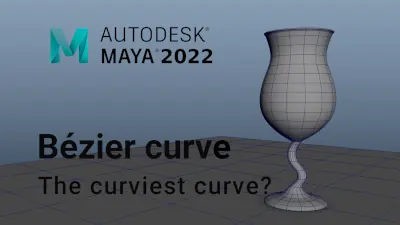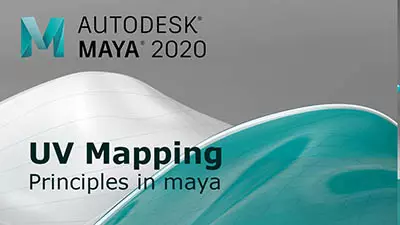Join Date: Mar 2011
Modeling/Texturing for movies
i am running into trouble when i don't understand the texturing process. I would like to work for features movies, and i want to know how is achieved to get so realistic character/environment.
When you finish high detail model, whatever is character or something else, The next step is to have clean UV's right?
And now, what map is need to generate, so you can put that in Photoshop, do hand painting, or whatever is the approach to get realistic texture, then what do you do then? What other maps are created when you put your texture from Photoshop to Maya? In what order?
Sorry for the noob question, i am totally confused, and i have no idea how to construct this question. Let's sum, what maps are created when you done the uv's process, and in what order. Do i need to do also normal mapping, like in games?
I've seen really good VFX breakdowns, from movies, especially i've been hooked from Clash of the titans, the scorpion battle, the Wizards , forgot how they call them, also the medusa battle.
There are several maps you can create (color,bump, specularity,reflection,displacement,normal ect)
At a minimum i would advise at least the first 3 in order to achieve something reasonable and more if you are going for photo realistic.
In order to make a texture in Photoshop or any other external painting app you will need a reference as to where your UV's sit on the model,you achieve this by saving a UV snapshot.
To create a UV snapshot go to Polygons tab of the Texture Editorand click on UV snapshot at the bottom of the menu.In the new UV snapshot window you can set up the file name and save location and most importantly the pixel size of the UV image.It is very important that you make the snapshot the same size as your intended texture map.
Choosing a size can be complex for a beginner but in general you have to think about how much of the 0 -1 texture space any given part of the model takes up (ie the head might take up one quarter), so if you had a texture of 1024 x 1024 for example the head would receive a texture of only 512 x 512 pixels with remainder going to the rest of the model.In short make sure the map is large enough so that you have enough resolution for the texture to be clear and sharp for the intended camera position (512 x512 might be okay for a long shot but would not stand up in a close up).
Once you have your UV snapshot you can import it in to Photoshop and put it on it's own layer and set the blend mode to screen if it is below your texture layers or multiply if it is above your texture layers.
Create a new layer for each of your maps starting with a color layer.
once you have your maps there a couple of ways your can use them, either creating a Photoshop file with all the texture included ( you need the proper file structure of groups ect) or the old fashioned and easier for beginners is to save each map out individually as either a tiff or targa if you have transparency or jpeg.
Depending on which method you used dictates what you do to use them in Maya.
Hope this helps a little and good luck with your texturing.

2 x Modeling Challenge Winner
Join Date: Mar 2011
I think i should stick with modeling, this Uv thing and texturing is way to complicated. No, i don't really understand the uvs, texturing, mapping, baking or whatever is called.Ok your first task is to UV map the objects so that your UV's fit into the 0 - 1 space of the UV Texture Editor.From reading your post i am assuming you know and to do this and have completed this step.
There are several maps you can create (color,bump, specularity,reflection,displacement,normal ect)
At a minimum i would advise at least the first 3 in order to achieve something reasonable and more if you are going for photo realistic.
In order to make a texture in Photoshop or any other external painting app you will need a reference as to where your UV's sit on the model,you achieve this by saving a UV snapshot.
To create a UV snapshot go to Polygons tab of the Texture Editorand click on UV snapshot at the bottom of the menu.In the new UV snapshot window you can set up the file name and save location and most importantly the pixel size of the UV image.It is very important that you make the snapshot the same size as your intended texture map.
Choosing a size can be complex for a beginner but in general you have to think about how much of the 0 -1 texture space any given part of the model takes up (ie the head might take up one quarter), so if you had a texture of 1024 x 1024 for example the head would receive a texture of only 512 x 512 pixels with remainder going to the rest of the model.In short make sure the map is large enough so that you have enough resolution for the texture to be clear and sharp for the intended camera position (512 x512 might be okay for a long shot but would not stand up in a close up).
Once you have your UV snapshot you can import it in to Photoshop and put it on it's own layer and set the blend mode to screen if it is below your texture layers or multiply if it is above your texture layers.
Create a new layer for each of your maps starting with a color layer.
once you have your maps there a couple of ways your can use them, either creating a Photoshop file with all the texture included ( you need the proper file structure of groups ect) or the old fashioned and easier for beginners is to save each map out individually as either a tiff or targa if you have transparency or jpeg.
Depending on which method you used dictates what you do to use them in Maya.
Hope this helps a little and good luck with your texturing.
I am practicing modeling and sculpting in Zbrush. But, i am starting to search some tutorials/resources for this. But this is way to complicated. Do you have any tutorial for it?
Yes, i would like to achieve photo realistic characters or/and environments.
There are a couple of tutorials here that would be very useful to you ....
https://simplymaya.com/autodesk-maya-...=142&sub_cat=0
https://simplymaya.com/autodesk-maya-...=179&sub_cat=0

2 x Modeling Challenge Winner
Join Date: Mar 2011
Thanks, will buy these right awayIt might seem a little daunting at first but the basics are not too hard to grasp with a little effort.
There are a couple of tutorials here that would be very useful to you ....
https://simplymaya.com/autodesk-maya-...=142&sub_cat=0
https://simplymaya.com/autodesk-maya-...=179&sub_cat=0
 But do you, think that this will help me to make realistic characters, environments or whatever? I think that this tutorials are made for games?
But do you, think that this will help me to make realistic characters, environments or whatever? I think that this tutorials are made for games?
You need to learn the fundamentals of how to use the tools first and then you can use the skill for either, the main difference between movie and game work is mesh and texture resolution,in game work the resolution is faked because of files sizes so the textures might not be as large or the model not so dense and maps are used to make them appear more detailed than perhaps they are but still the UV's are laid out the same way and the textures created using the same procedures.
For Movie production other factors like how it will be viewed on the screen (ie distance from the viewer and how long it appears)determine things like texture resolution or mesh density.
It all about achieving believable results using the minimum amount of time and effort, so if a model is in the distance and say moving really fast across the screen then you might be able to use a low res character and still have it hold up to be believable.
As for making things look realistic other things like lighting setup also make a difference, you need to study objects in the real world and take note of the materials they are made of and by that i mean look at characteristics like how shiny,reflective,roughness and not just say oh it's wood or plastic but i am afraid there is no substitute for practice...i cannot emphasize this enough practice, practice ,practice and it will get a lot easier.

2 x Modeling Challenge Winner
Last edited by jsprogg; 02-01-2012 at 05:45 AM.
Join Date: Mar 2011
I see what you mean. I am only interest in movies, not so much in games, but i am hardcore playerThe basic concepts for UV layout and creating textures are the same whether it's for games or movies.
You need to learn the fundamentals of how to use the tools first and then you can use the skill for either, the main difference between movie and game work is mesh and texture resolution,in game work the resolution is faked because of files sizes so the textures might not be as large or the model not so dense and maps are used to make them appear more detailed than perhaps they are but still the UV's are laid out the same way and the textures created using the same procedures.
For Movie production other factors like how it will be viewed on the screen (ie distance from the viewer and how long it appears)determine things like texture resolution or mesh density.
It all about achieving believable results using the minimum amount of time and effort, so if a model is in the distance and say moving really fast across the screen then you might be able to use a low res character and still have it hold up to be believable.
As for making things look realistic other things like lighting setup also make a difference, you need to study objects in the real world and take note of the materials they are made of and by that i mean look at characteristics like how shiny,reflective,roughness and not just say oh it's wood or plastic but i am afraid there is no substitute for practice...i cannot emphasize this enough practice, practice ,practice and it will get a lot easier.

When should i bother with lighting and such as you said? So in films low resolution character/ environment is used too ? I think, lighting is bit difficult, but do you have/know any tutorials for it?
my advise to you is to learn the basics of lighting at the very least for now and when you have learned and are comfortable with modeling and texturing try to improve your lighting and rendering knowledge.
Simply Maya has a free basic 3 point lighting tutorial here https://simplymaya.com/autodesk-maya-...=176&sub_cat=0
and a more in depth tutorial that is not free here https://simplymaya.com/autodesk-maya-...=177&sub_cat=0

2 x Modeling Challenge Winner
Last edited by jsprogg; 02-01-2012 at 05:04 PM.








